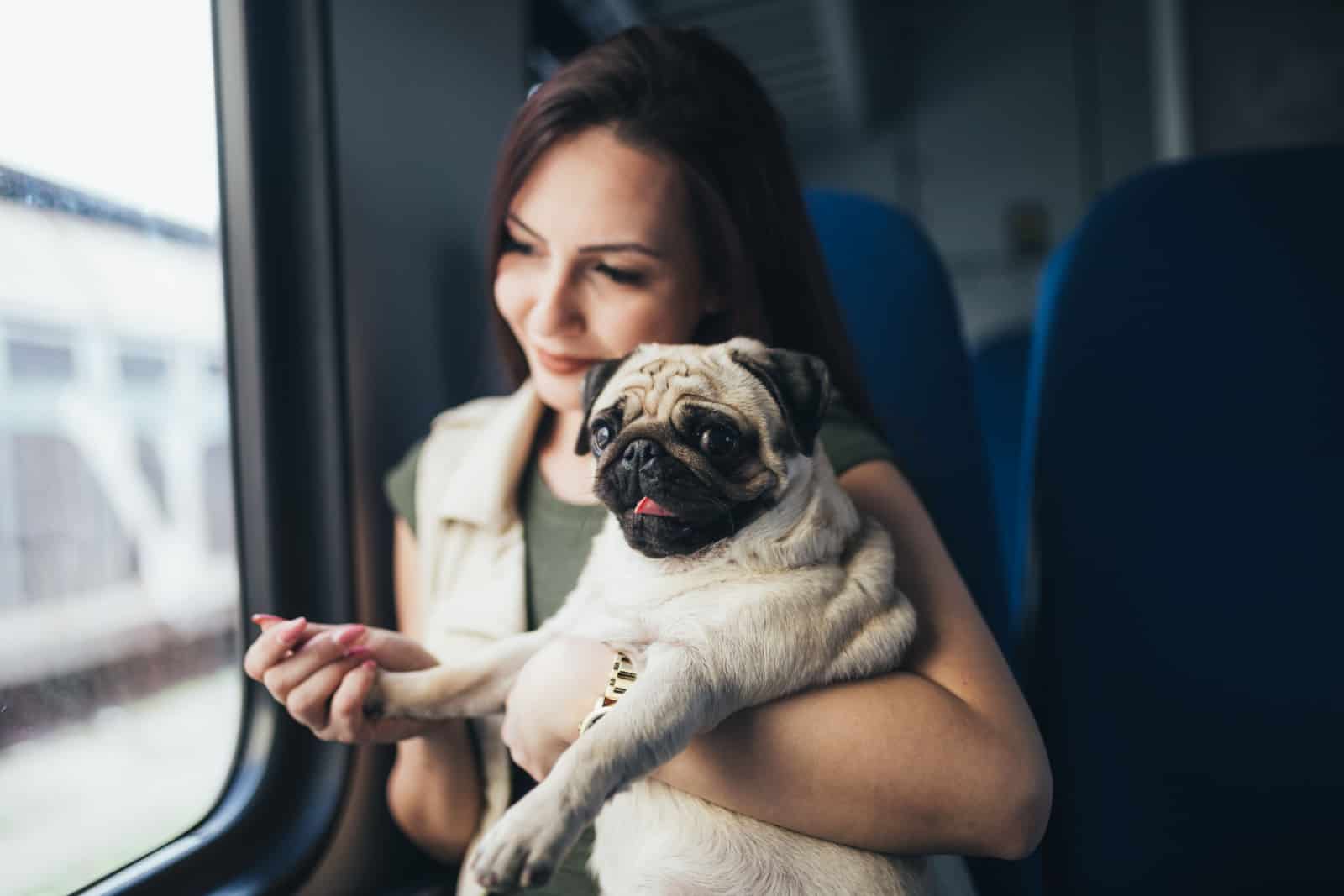The marvel of canine body language is really fascinating, they’re able to show so many emotions through the use of a few body parts, one such body part are his paws, but many people still ask the question of why does my dog put his paw on me?
Well, the answer to why your dog puts his paws on you is usually going to be related to either a show of love, or begging for something, though it can encompass a whole spectrum of emotion which is why knowing the context around the act is greatly needed.
If you don’t notice other nuances alongside the act of pawing, it’ll be hard to discern what he’s actually trying to communicate to you.
Aside from excitement and wanting to beg for food or walkies, it can also be a way of him trying to show you that he’s in pain and wants you to do something, or that he’s anxious and wants your attention, among other things.
So, if you’d like to find out more about the many different things your dog may be trying to tell you through the act of pawing at you and what you can do in regards to the negative ones, be sure to read on.
Why Does My Dog Put His Paw On Me: The 7 Top Reasons
1. He Wants Something
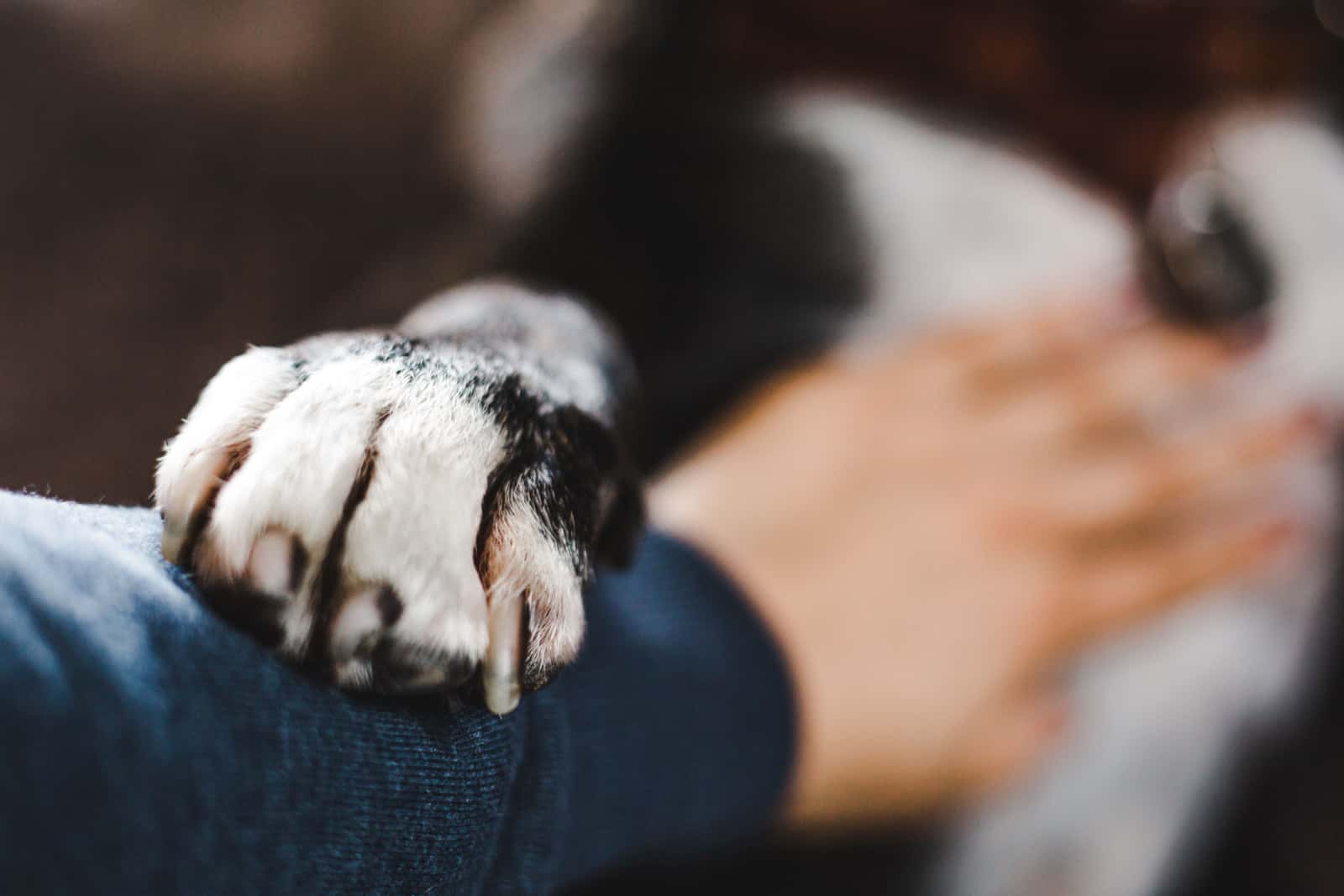
We’re all familiar with the art of begging, and dogs are certainly one species that has mastered it.
The infamous puppy dog eyes are a dead giveaway of this, one that we can rarely ever resist, but they’re also paired together with lowered ears, and, most notably, a paw being placed on you.
It’s a way of him signaling you that he wants something that only you can provide him.
As for what that something is can vary.
If it’s followed by a wagging tail with a leash in his mouth, a quick motion of his head to the door or him pushing away from you and straight up running toward the door, then it’s a clear sign that he wants to go for a walk.
Whether it’s just to stretch his paws and enjoy a little bit of the grass, sky and sunshine, or if it’s nature’s call in other ways, that I can’t say, but know that a walk is going to solve either nonetheless.
If he’s shoving his head into your chest or the palm of your hand alongside the pawing, then he may just be seeking some cuddle time, your good little boy eager to spend some time with you and to show you just how much he loves you.
2. He’s Hungry
Following up on the first reason, we have a more physical desire, food.
If you see your dog carrying his bowl in his mouth or simply trying to indicate in any way toward the bowl or the area where you normally come from with the food, he may be signaling that he’s a little bit hungry.
If that’s the case, then the solution is easy, or well, it is if it’s his actual feeding time.
All you need to do then is get him his daily portion of kibble, or give him a surprise by adding some of the wet stuff in or treating him with a bone or similar.
However, if it’s not regular feeding time, you may have to let him down gently. After all, you can’t risk him gaining any excess weight in fear of mounting health concerns.
3. He’s Showing Anxiety
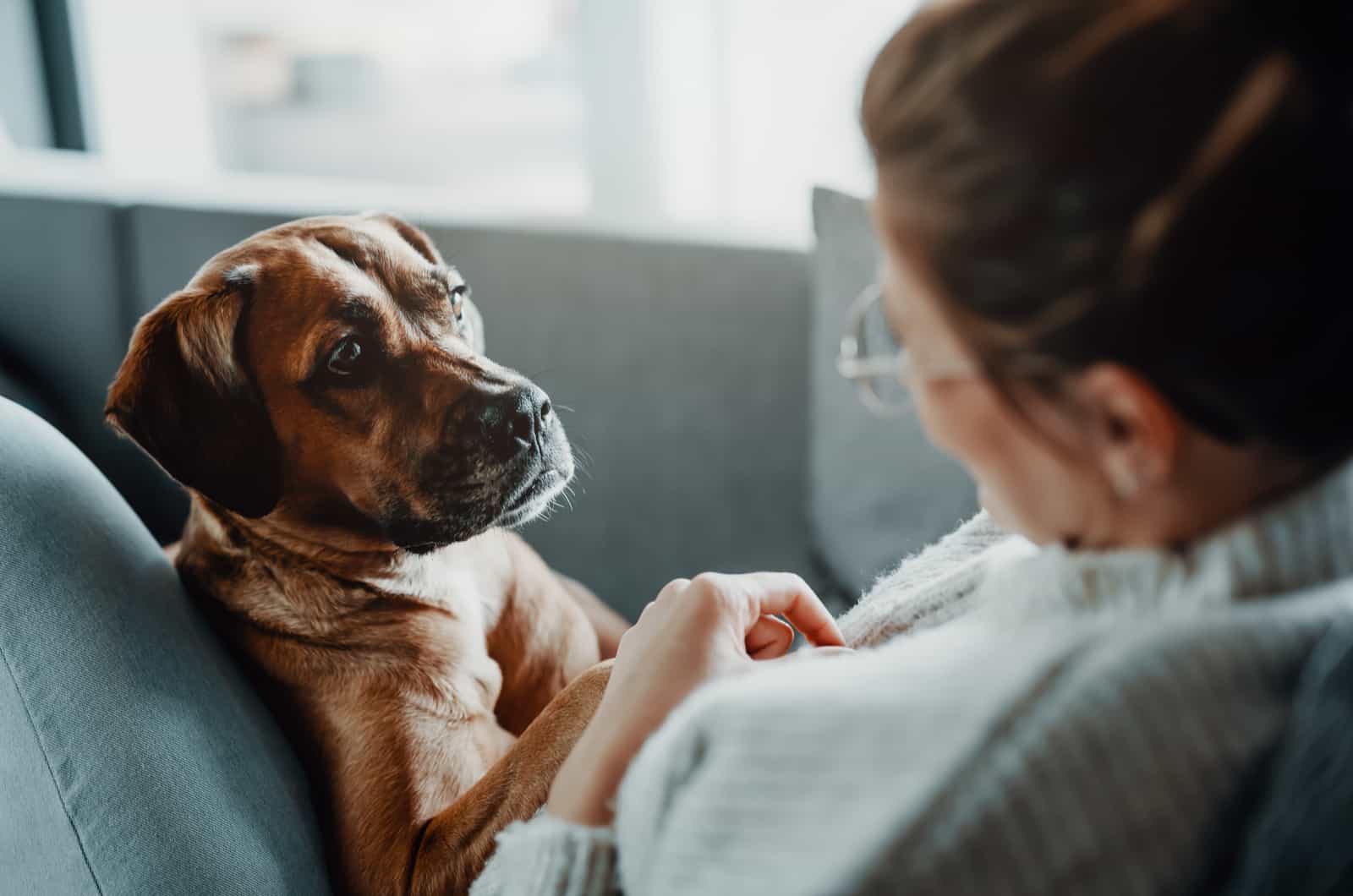
Another reason that shares a body language that’s quite similar to that of wanting to cuddle is a potential sense of anxiety in the dog.
It will mostly be the same, except for a few key factors, namely the tail is likely to not be wagging now and will instead be lowered or tucked between his legs while he gives you the sad eyes, but still seeks to push his muzzle into your chest and nervously paws at your legs.
Should that be the case, then devote some of your time to him so you can help comfort him and potentially figure out the source of his anxiety.
Normally this behavior occurs due to loud noises, a potential shock of static electricity if you have a furry doggo, an injury, or something similar that would cause him to get a bit scared.
In order to prevent this from happening too often, try and locate the source of his stress and either eliminate it if possible, or find a way to make your dog as comfortable as he can be by allowing him to distance himself from the core of the issue.
4. He’s Trying To Indicate A Potential Health Issue
Another negative sign that includes pawing can be that your dog is suffering from a more physical issue rather than a mental one.
The body language pattern may be similar to that of #3, except it may be followed up by whining on his part.
Regardless of whether it’s anxiety or some specific problem, make sure to give your dog a look over, and if he doesn’t seem to be calming down, you may need to take him to a vet, especially if he’s showing some symptoms of a potential issue alongside this behavior.
Some of the more common ones to be on the lookout for would be lethargy and general restlessness, as well as clear skin irritation or open injury.
That said, there can be other, potentially more serious symptoms showing, just keep an eye out and play it safe.
Even if it turns out to be nothing, a regular checkup to the vet isn’t the worst thing to do to a pet as it helps keep him in peak condition.
5. He’s Been Trained To Do So
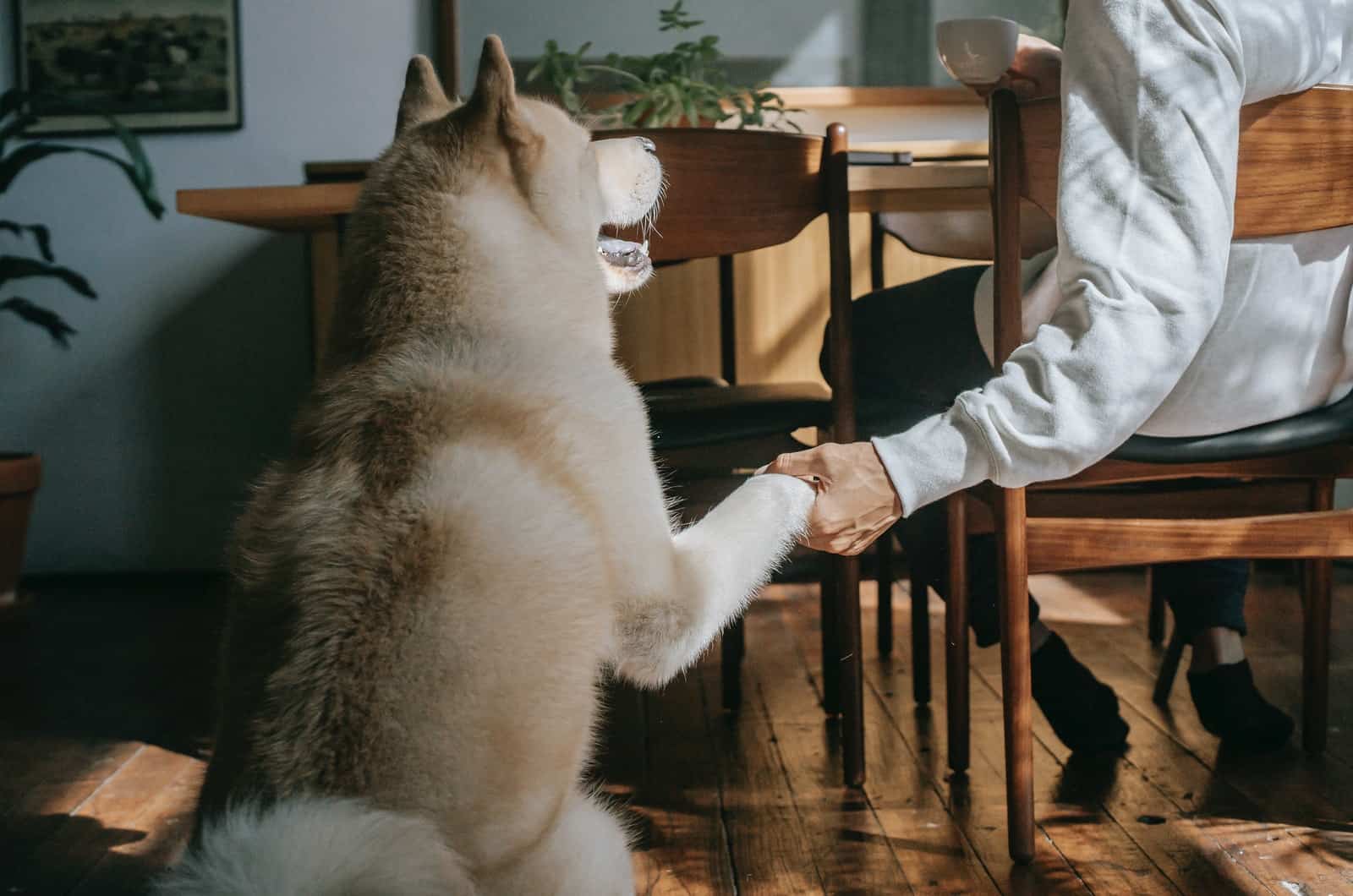
One of the first, and most common things dogs are taught is to give their paw to their owners. A simple command, yet the fundamental step in training your pooch to be an obedient and loyal member of the family.
That said, this one shouldn’t come as a surprise given that you’ll likely be teaching him this yourself, but it’s worth noting nonetheless as it is an extra reason.
6. He’s Showing His Satisfaction Or Thanks
While similar to that of wanting to cuddle, this one is more reactive than proactive.
When you engage in petting your dog, rubbing his belly or under his neck, or similar activities, you’ll notice how he’ll sometimes place his paw on you, as if to stop, but really what he’s trying to do is show that he’s thankful for what you’re doing.
7. He’s Trying To Comfort You
Finally, as well as you comfort your dog in times of fear and anxiety, he could also be trying to do the same for you.
There’s a reason they’re called man’s best friend, and this is one of them.
Dog’s aren’t just social animals, they’re incredible empaths on top of their social skills, and they can sense when you’re feeling down for whatever reason, and it’s all thanks to their nose which can detect stress given how sharp their sense of smell is..
So, if you see him placing his paw on you without any clear reason alongside simply laying up against you, know that he likely believes that you’re sad for whatever reason and he’s trying to make you feel better.
Is A Dog Putting His Paw On Me Considered Normal Behavior?
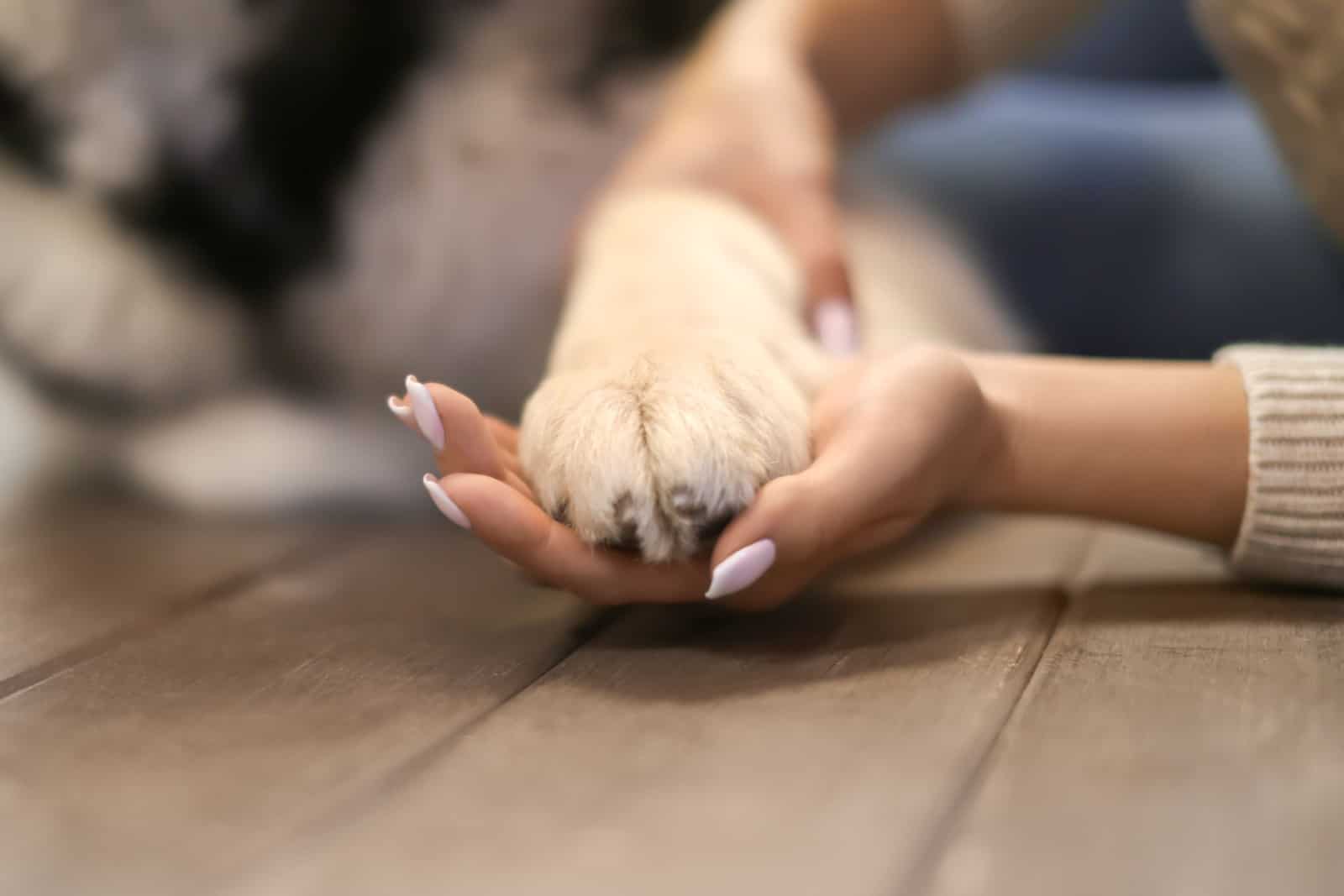
Absolutely, it’s just one of the many ways that dogs communicate with their owners and they’ve developed a set of different layouts of these signals to make it easier for you two to understand one another.
Other, similar signals can be trained and some of the existing ones can be trained to be displayed differently as well, depending on what’s required, but it mostly revolves around getting your doggo used to expressing a certain emotion or desire through the new method.
In Conclusion
Why does my dog put his paw on me? A question, among many others revolving around body language that first time dog owners often ask to better understand their canine companions.
As we’ve seen here, it can be a wide variety of things, the source of some of them good, some bad, but ultimately it’s a way to help better communicate your dog’s desires.
The most common ones are those that show love and mutual care between the two of you, while others help indicate a specific want, be it food or comfort due to an anxious or depressive episode for whatever reason.
The worst ones are those related to health issues as those are often hard to discern without other visual symptoms, and even then you’re more than likely to worry regardless of severity, especially since going to the vet ends up being the default option.
Whatever the case may be, know that not a single one of them is malicious in nature and that you should show understanding for your pooch for trying to communicate in a more amicable manner rather than destructive.
I hope I’ve helped teach you something new about your furry best friend. Until next time, pet parents.
RELATED LINKS:
